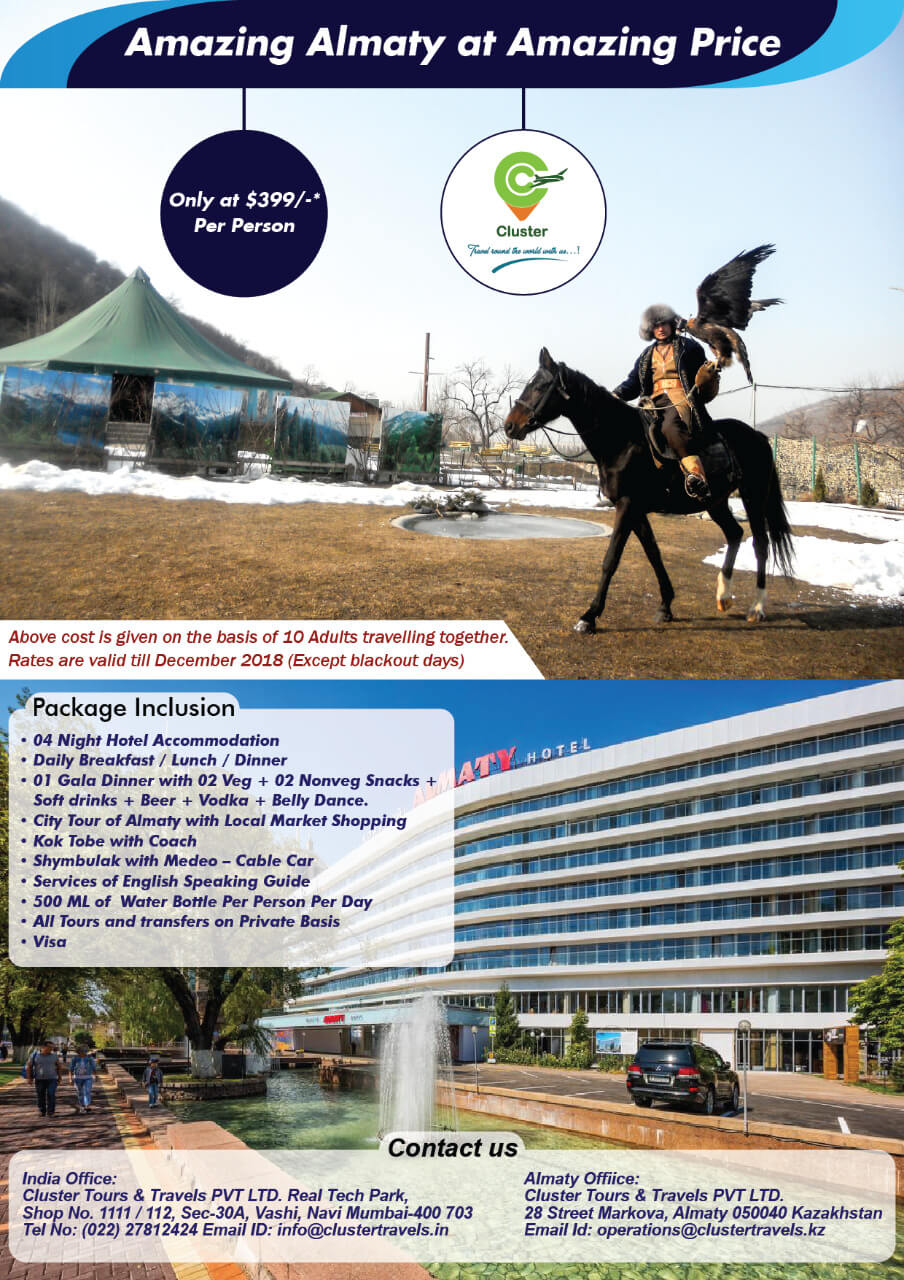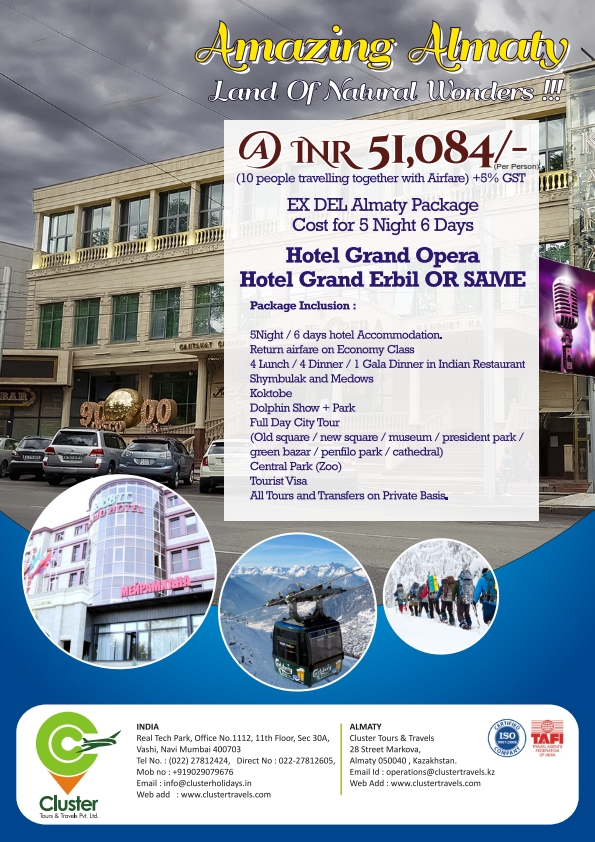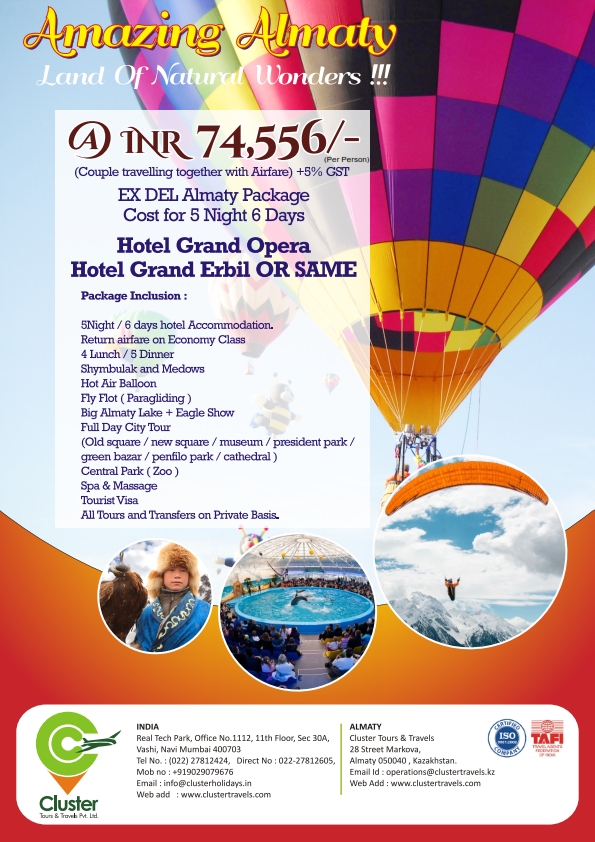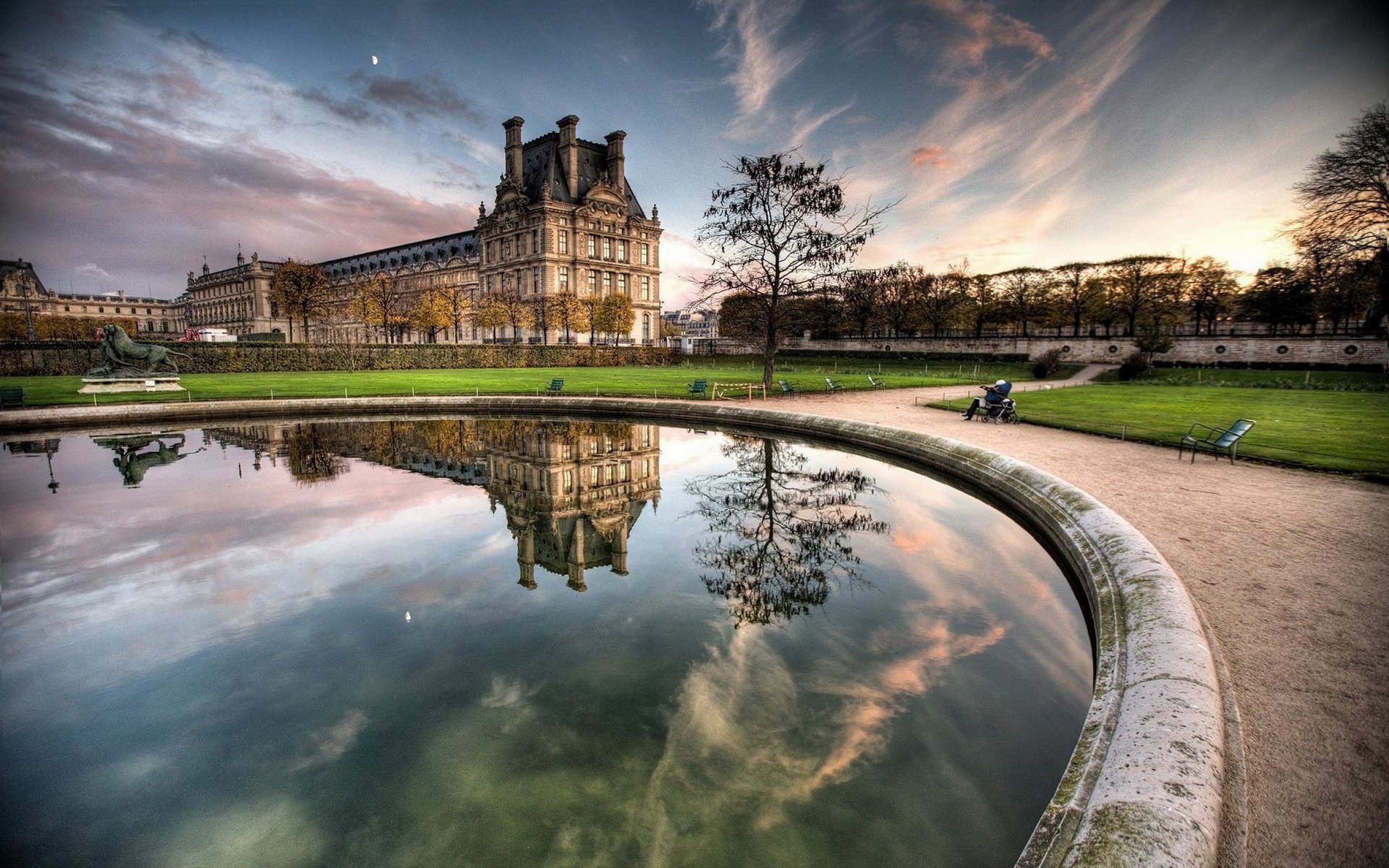


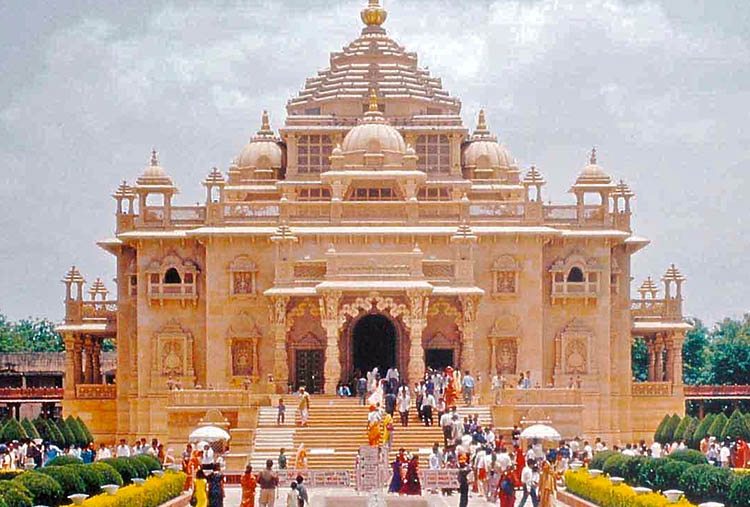

DAY 01 – BY AIR / BY TRAIN – ARRIVE AHMEDABAD
Today arrive Ahmedabad and transfer to hotel
Ahmedabad is Located on the banks of the river Sabarmati; the city was founded by Sultan Ahmad Shah in 1411. Today it is one of the fastest growing cities of India and is an immense repository of tradition, history & culture. Its famous walled area is one of the finest examples of community living & the city thrived as the textile capital & was nicknamed “Manchester of the East’ in 1888. This multicultural city is home to some of the finest Indo-Sarcenic mosques & Jain temples.
The old city of Ahmedabad is dotted with labyrinthine by lanes called ‘polls’. The exquisite carved wooden mansions and havelis are in no manner less than their stone counterparts in Rajasthan. The city also offers a rich architectural legacy that blends Hindu and Muslim schools of architecture, stone and brick with arches, domes and vaults, carved pillars, trefoil designs besides the modern buildings designed by the famous French architect, Le Corbusier and Louis Kahn.
Later visit Dakor Temple –
The main temple, enclosed by a fort wall, is situated near the bank of the holy lake Gomti during the main bazaar of Dakor. The temple is covered with 8 domes and 24 turrets, with the central dome reaching a height of 27m. Crowned with a golden kalash and a white silken flag, this temple is the tallest in the district. Though not very rich in carving, the main cupola derives its influence from the Maharashtrian style of temple architecture. The main hall features paintings depicting events in Lord Krishna’s life.
It is believed that Ranchhodji, a name for Lord Krishna meaning “he who left the battlefield", inspired Gopal Jagannath Ambekar, a shroff of a Peshwa’s court in Poona, in a dream to build a vast and magnificent temple. The temple was built in 1772 A.D. The main Ranchhodrai idol is in black touchstone, 1m tall and 45 cm in breadth, richly adorned with gold, jewels and expensive clothes. Its throne, an ornate masterpiece of woodcarving plated in silver and gold, was presented by the Gaekwad of Baroda.
Later drive back to Ahmedabad.
Evening Market at Law Garden displays beautiful textile handicrafts of Gujarat.
Overnight at hotel
DAY 02 – BY ROAD – 453 KMS / 09 HRS – AHMEDABAD TO DWARKA
After breakfast drive to Dwarka enroute visit Akshardham Temple in Rajkot.
Later continue drive to Dwarka and transfer to your hotel.
The small coastal town of Dwarka is one of the four most holy Hindu pilgrimage sites in India. It is here that Krishna founded his capital after leaving Mathura. Excavations have revealed 5 earlier cities at the site, all submerged. The present town dates largely to the 19th century and attracts thousands of pilgrims to celebrate the Holi, Diwali and Janmashthami festivals. The multi pillared Sabha Mandapa leads to a 60-pillared sanctum sanctorum that dates back 2500 years per the scriptures.
Overnight at hotel
DAY 03 – IN DWARKA
After breakfast visit Dwarkadhish Temple – Dwarka is known all over the world for the Dwarkadhish temple, the ‘Lord of Dwarka’. This temple is also known as the Jagat Mandir or the temple of the world. This temple was constructed over 1400 years ago, and houses the image of Lord Krishna. This temple is one of the most famous pilgrimage place for the Hindus and attracts pilgrims from all over the world. This temple is magnificently built on the traditional lines and has five floors supported by 60 columns. The temple is profusely carved from the base to the pinnacle. The temple is built of sandstone. The interior is simple while the exterior is covered with elaborate carvings. Some of the major festivals of Janmashthami and Navratri are celebrated with great enthusiasm and rejoicing in the Dwarka.
Later visit Bet Dwarka & Nageshwar temple. Bet Dwarka: Bet is situated at 30kms from Dwarka and is surrounded by sea from all sides. One can reach Bet from Dwarka through Okha by road. On reaching Okha port jetty, one can reach Bet through a little sea journey in a launch or in a small boat.
Nageshwar Temple or Nagnath Temple is located on the route between Gomati Dwarka and the Bait Dwarka Island on the coast of Saurashtra in Gujarat. The Jyotirlinga enshrined in the Temple of Nagnath is known as Nageshwar Mahadev and attracts thousands of pilgrims all-round the year.
This powerful Jyotirlinga symbolizes protection from all poisons. It is said that those who pray to the Nageshwar Lingaa become free of poison. The Rudra Samhita shloka refers to Nageshwar with the phrase ‘Daarukaavane Naagesham’
The Rukmini temple, dating from 12 to 13 Century, was built in honour of Rani Rukmani, princess of Vidharba, which was to be married to Sishupala, but fled with Lord Krishna. This small temple, 1.5 km north of the city, is an architectural masterpiece. The temple walls are decorated with beautiful paintings and sculptures.
Gopi Talav: This is the place where Lord Krishna used to play with his Gopikas. There is a small pond where it is said that Lord Krishna used to play with the Gopika Strees (Gopika Women).
Overnight at hotel
DAY 04 – BY ROAD – 250 KMS / 05 HRS – DWARKA TO SOMNATH
After breakfast drive to Somnath enroute visit Moola Dwarka and Porbandar.
Porbandar, the coastal heritage town of Gujarat is located on the Saurashtra peninsula, on the Arabian Sea. This city is described in Skanda Purana as Sudamapuri and Ashmavati and had a flourishing trade with Africa and Arabia. Per the legends, this city was the main link of the great friendship between Lord Krishna and Sudama. Porbandar was established as a capital by Rana Sartanji in 1785 AD. Porbandar was the former capital of the Jethwa Rajput petty princely state. The most impressive feature of Porbandar is the city planning and the stone buildings with ashlar masonry and rich carving, the facades of the houses on either side of the streets, with windows and carved gateways. Porbandar is also associated with Mahatma Gandhi, the father of nation as he was born here. Today, fine quality silk and cotton are manufactured here. There are also chemical factories and cement works.
Later visit Kirti Mandir – Kirti Mandir was the house of the Mahatma Gandhi and Kasturba, his wife. This place is situated near the place where the Mahatma Gandhi was born. This place is now a small museum and has a Gandhian library and a prayer hall.
Also, visit Sudama Dwarka or Sudama Temple.
Later continue to drive to Somnath; arrive Somnath and transfer to your hotel.
Somnath consists of a few streets leading away from its phoenix like temple. The rugged sea below gives it a lonely, wistful charm. The pilgrim trade is constant, but merchants are relaxed, perhaps in deference to the shadows cast by the awe-inspiring temple. Somnath is mainly known for the legendary shore temple of Somnath, which is dedicated to the Lord Shiva.
This temple is one of the twelve most sacred shrines dedicated to Lord Shiva and a Jyotirlinga. Per the legend, Somnath temple was built originally in gold by Somraj, the moon god. This Somnath temple was rebuilt and destroyed seven times till 1706 A.D when it was destroyed by the Mughal emperor Aurangzeb. After that it was finally rebuilt in 1950 with the support of Sardar Vallabhabhai Patel. Somnath Temple is visited by followers of both Shiva and Vishnu. The most important temple and main highlight in Somnath is the Kailash temple with its imposing architecture, a 50-meter high tower, intricate carvings and several holy idols and images. After performing the evening Aarti and after witnessing the Sound & Light Show then visit the beach of Somnath which is very beautiful & a captivating sight to behold. The fresh blue waters, humming waves and the cool sands give you a feeling of having landed in a paradise. The beach has pleasant sands, great sea views, camel and pony rides, coconut stalls and snack places.
Overnight at hotel
DAY 05 – BY ROAD – 406 KMS / 08 HRS – SOMNATH TO AHMEDABAD
After breakfast visit Rudreshvara Temple – Rudreshvara Temple is a ruined temple located near the Somnath temple. Bhalka Tirth – Bhalka Tirth is situated halfway between the Veraval and Somnath. At this place, the Lord Krishna was mistaken for a deer and wounded by an arrow.
Later drive to Ahmedabad. Enroute visit Akshardham Temple.
Akshardham: Lord Swaminarayan, born in Chapaya in Uttar Pradesh, took a seven-year pilgrimage in Gujarat to preach his religion. He built six temples, the first being at Kalupur in Ahmedabad. Akshardham, the Swaminarayan temple of Gandhinagar, is a modern complex, built in traditional Indian architectural style from 6,000 metric tons of pink Rajasthan sandstone, carved by expert artisans from Bansipahadpur. The temple is set in a multi-acre garden called Sahajanand Van, with intricate sculptures of Hindu Gods. There is a gold leaf copper sculpture of Lord Swaminarayan that faces similar sculptures of Gunatinand Swami. The interiors have beautiful columns in rosewood that rise to a high dome. Akshardham remains closed on Mondays.
Overnight at hotel
DAY 06 – BY ROAD – 240 KMS / 05 HRS – AHMEDABAD TO MOUNT ABU
After breakfast drive to Mount Abu enroute visit Modhera – Sun temple.
Modhera: The Sun temple of Modhera is one of the finest examples of Indian architecture of its period. Built in 1026 A.D. the temple is dedicated to the Sun-God, Surya and stands high on a plinth overlooking a deep stone-steeped tank. Every inch of the edifice, both inside and outside is magnificently carved with Gods and Goddesses, birds, beasts and flowers. Sun Temple of Modhera was built by King Bhimdev I (1026-27) and bears some resemblance to the later and far better known, Sun Temple of Konark in the state of Orissa, which it predates by some 200 years. Like that temple, it was designed so that the dawn sun shone on the image of Surya, the sun God, at the time of the equinoxes. The main hall and shrine are reached through a pillared porch and the temple exterior is intricately and delicately carved. As with the temple of Somnath, this fine temple was ruined by Mohamed of Ghazni.
Later continue to drive and visit Siddhpur.
Sidhpur – a sacred town in the north of Ahmedabad. It is situated on the left bank of the River Saraswati, around 24 kms upstream of Anhilwada Patan, the old capital of Gujarat. The town is a revered destination, flanked by temples, kund, ashrams and other sacred structures. The town also holds importance for the Bohra Muslims, an affluent Muslim community spread all over the world. They have contributed significantly to the development of Sidhpur.
Their old Havelis and mansions, some over 100 years old have a markedly European flavor and a walk through the ‘Bohra Vad’ is like a stroll through an England.
Later continue to drive and visit Ambaji temple.
Ambaji – Ambaji Temple contains no idol, but an inscribed Yantra in the niche. Ambaji is essentially a temple town-with a temple dedicated to Goddess Ambaji at the centre. The Ambaji Temple and the front court ‘Chachar no Chowk’ are aligned in the same axis of the cave at Gabbar hill-the original abode of Goddess Ambaji.: 22 kms from Danta is one of the major Shakti-piths of India, situated in the Arasur hills. The present temple was constructed a few years ago, maintaining the original architectural style. Millions of pilgrims visit the temple every year-especially during Navratri to seek the blessing of Goddess Ambaji.
Later continue to drive and arrive Mount Abu; arrive and transfer to your hotel.
At 1200 meters, Mt. Abu is the highest point of the Aravalli Range passing through Rajasthan. The only hill resort of Rajasthan, it is built around a lake and is surrounded by forested hills. According to a legend, the place derives its name from Arbuda, a serpent who descended to the spot to rescue Shiva’s bull, Nandi. Besides having all the features of a pleasant hill resort, Mount Abu is also a center of pilgrimage for Jains on account of the famous Dilwara Temples. There are interesting treks and picnic spots, romantic royal retreats of various erstwhile royal families, and some relics of the Raj period.
Also visit Nakki Lake, and see the strange rock formations around it including Toad Rock. The Achalgarh fort has the famous Achaleshwar temple and also provides superb views of the area.
Overnight at hotel
DAY 07 – BY ROAD – 200 KMS / 04 HRS – MOUNT ABU TO NATHDWARA
After breakfast proceed for city tour of Mount Abu. Visit the breathtaking Dilwara temples, among the finest examples of Jain architecture with their superb marble carving. The complex consists of five temples built between the eleventh and thirteenth century. The intricate ornamental carvings here represent the great heights reached in stone decoration.
Later drive to Nathdwara. Arrive Nathdwara and transfer to your hotel.
Nathdwara is sited on the right bank of Banas River. Nathdwara is famous for its 17th century temple that is dedicated to Lord Shrinathji (Lord Krishna). The term ‘Nathdwara’ suggests the ‘gate of the lord’. Shrinathji Temple is also known as ‘Haveli of Shrinathji’ and makes a prominent pilgrimage of the Hindus / Vaishnavas. The temple has a story behind its establishment. According to the legend, the image of Lord Shrinath ji was enshrined in Vrindavan (land of Lord Krishna), but to protect the idol from the destructive rage of Aurangzeb. In 1672, Rana Raj Singh was the only gallant, who made an effort to rescue the idol from the domain of Aurangzeb. It is said that when the image was being shifted to an impervious place then at a particular place, the wheel of vehicle sank deep down in mud. The image refused to move further, so the escorting priest apprehended that this was Lord’s chosen spot. Thus, a temple was built on the same spot.
Later visit Nathdwara – Shrinathji. See the 18th century Shrinathji temple, one of the most important shrines for devotees of Krishna. This simple shrine houses a black stone image of Vishnu brought from Mathura in 1669 to protect it from Aurangzeb’s destructive forces. Non-Hindus are not allowed inside but the outside has interesting paintings. The 400-year old tradition of Picchwai painting (cloth paintings with religious themes) originated here.
Later visit Dwarkadhish Temple in Kankroli.
Kankroli Temple is popularly called as temple of Dwarikadhish. Dwarikadhish is one of the names of Lord Krishna. This Temple is the most significant temple of the Vaishnavas and Vallabhacharya sect. The chief deity of Kankroli temple is believed to have imported from Mathura, the hometown of Lord Krishna. Kankroli temple is the biggest temple of Lord Dwarikadhish in Kankroli and ranks very high among all the temples of Vallabhacharya. Dwarkadheesh Temple offers a tranquil view of the cool and calm Rajsamand Lake.
Overnight at hotel
DAY 08 – BY ROAD – 350 KMS / 07 HRS – NATHDWARA TO AHMEDABAD FOLLOWED BY AIR / TRAIN – DEPART AHMEDABAD
After breakfast drive to Ahmedabad enroute visit Shamlaji temple.
There is a small shrine on the way from the Shamlaji Temple to the Meshwo river, where an image of a standing Ganesha idol from the Late-Gupta period is still worshiped. The temple at Harishchandra ni chori probably dates to the 10th century A.D. It has a rectangular sanctum with a large pavilion in front. The whole structure is enclosed within the courtyard. The walls of this courtyard have fallen but the ornamental gateway (toran) still stands.
Numerous temples in ruins, ancient brick-work and scattered idols found at Shamlaji show that since ancient times it has been a popular and important center of pilgrimage on the highway between Gujarat and Rajasthan. Devni Mori, a place about two kms from Shamlaji, is having remains of a Buddhist monastery from around 3rd-4th century AD. The stupa which is considered as a sharir stupa, has proved the presence of Buddhists in Vadnagar. Excavating of the stupa brought to light an inscribed casket which contained relics of Buddha. It is quite clear that the bodily relics of Buddha in the casket.
Being a place of pilgrimage established at a picturesque spot, there are several other ancient shrines scattered all over this place. Amongst them is the small temple of Trilokeshwer just opposite Shamlaji has a beautiful and unusual idol of Shiva with the trident. The Kashi-Vishwanath Mahadev is a simple but ancient temple, which is about seven feet below the ground level. The temple of Ranchhodji, is on the opposite bank. There is also the tomb of Navgaja Pir, a maulvi (Muslim cleric) close by visited by many Adivasis.
Later in time transfer to Ahmedabad Airport / Railway Station to board flight / train for your next destination
Hotels Accommodation
Mail as per Itinerary
Economy Air Ticket
Tourist VISA
Travel Insurance
There is no content
1) Ahmedabad, in western India, is the largest city in the state of Gujarat. The Sabarmati River runs through its center. On the western bank is the Gandhi Ashram at Sabarmati, which displays the spiritual leader’s living quarters and artifacts. Across the river, the Calico Museum of Textiles, once a cloth merchant’s mansion, has a significant collection of antique and modern fabrics.
2) Dwarka is an ancient city in the northwestern Indian state of Gujarat. It’s known as a Hindu pilgrimage site. The ancient Dwarkadhish Temple has an elaborately tiered main shrine, a carved entrance and a black-marble idol of Lord Krishna. Dwarka Beach and nearby Dwarka Lighthouse offer views of the Arabian Sea. Southeast, Gaga Wildlife Sanctuary protects migratory birds and endangered species like the Indian wolf.
3) The Somnath temple located in Prabhas Patan near Veraval in Saurashtra on the western coast of Gujarat, is believed to be the first among the twelve jyotirlinga shrines of Shiva. It is an important pilgrimage and tourist spot of Gujarat.
4) Mount Abu is a hill station in western India’s Rajasthan state, near the Gujarat border. Set on a high rocky plateau in the Aravalli Range and surrounded by forest, it offers a relatively cool climate and views over the arid plains below. In the center of town, Nakki Lake is a popular spot for boating. Close by are the centuries-old Dilwara Temples, ornately carved from white marble and of great spiritual importance.
5) Nathdwara is a town in India’s western state of Rajasthan. It is located in the Aravalli hills, on the banks of the Banas River in Rajsamand District, 48 kilometres north-east of Udaipur
Special Offers
